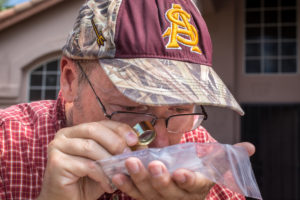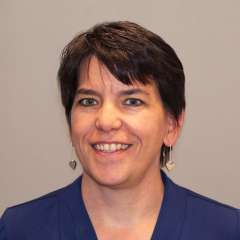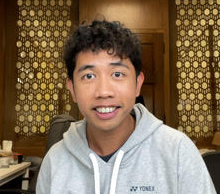
Laurence A. J. Garvie (Collection Curator, Buseck Center for Meteorite Studies; Research Professor, School of Earth & Space Exploration) Ph. D. University of Bristol (1992) – Dr. Garvie deciphers early Solar System processes through the use of innovative, high-spatial-resolution electron microscopic and spectroscopic studies of meteorites. His studies primarily focus on carbonaceous chondrite meteorites, which provide a unique record of the physical and chemical processes that shaped our Solar System. His current projects are roughly divided between mineralogical studies designed to reveal the structure and formation conditions of the abundant phyllosilicates in the CI and CM chondrites, and studies of the structure, distribution and formation conditions of organics in the carbonaceous chondrites. He also leads projects designed to understand the chemistry and mineralogy of rock surface coatings, with particular emphasis on the laminated, Mn-rich coatings of arid terrestrial environments. Dr. Garvie serves as an Associate Editor for American Mineralogist. Photo by Charlie Leight/ASU Now.
Amy J. G. Jurewicz (Emeritus Assistant Research Professor, Buseck Center for Meteorite Studies and School of Earth & Space Exploration) Ph. D. Rensselaer Polytechnic Institute (1986) – Dr. Jurewicz’s research currently focuses on the recovery and analysis of the GENESIS solar-wind collector materials. Solar wind is a direct analog of the early solar nebula, so from its composition we will glean insight into how our Solar System formed. Genesis is a NASA mission which collected solar-wind sample for two years, prior to a hard landing in Utah during the return to Earth. Before Genesis, Dr. Jurewicz’s research included work on a number of NASA missions, as well as the fabrication of meteorite analogs for the purpose of determining how one meteorite could be formed from another through natural, early Solar System processes.

